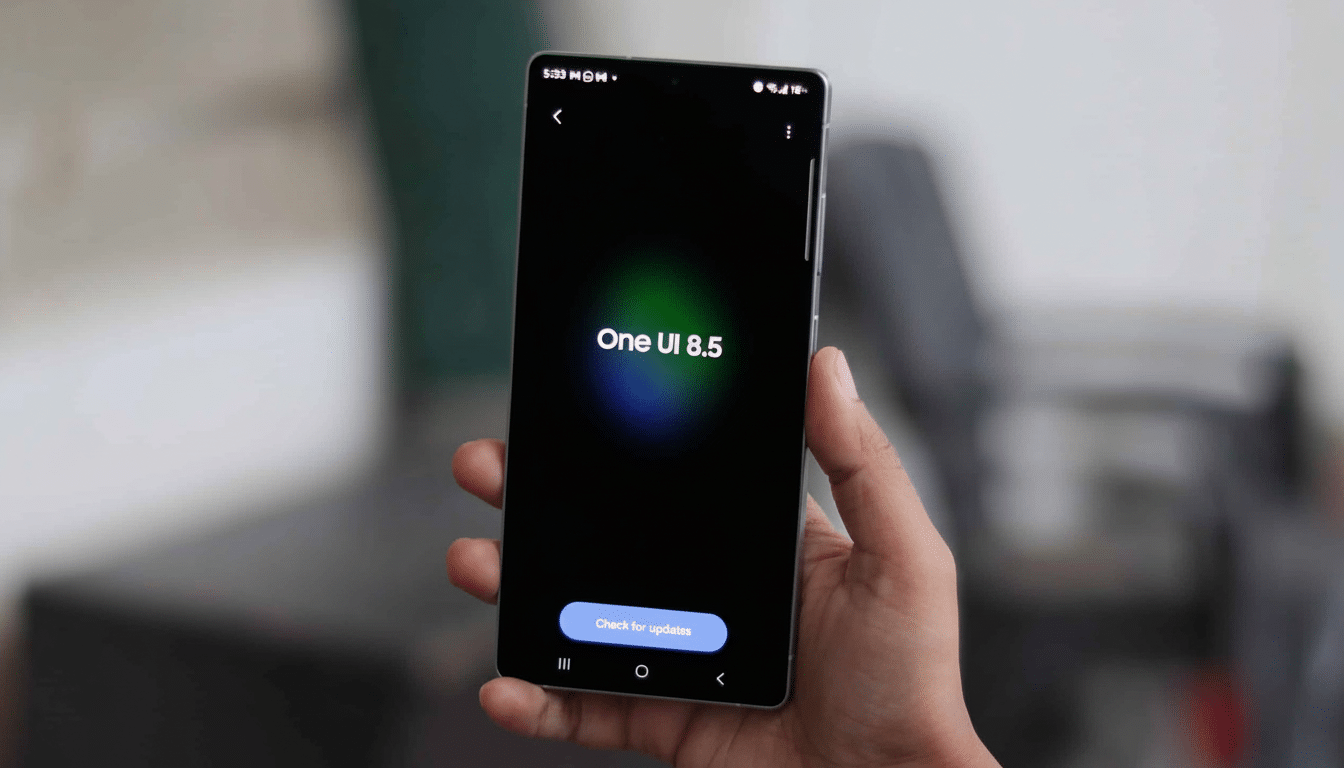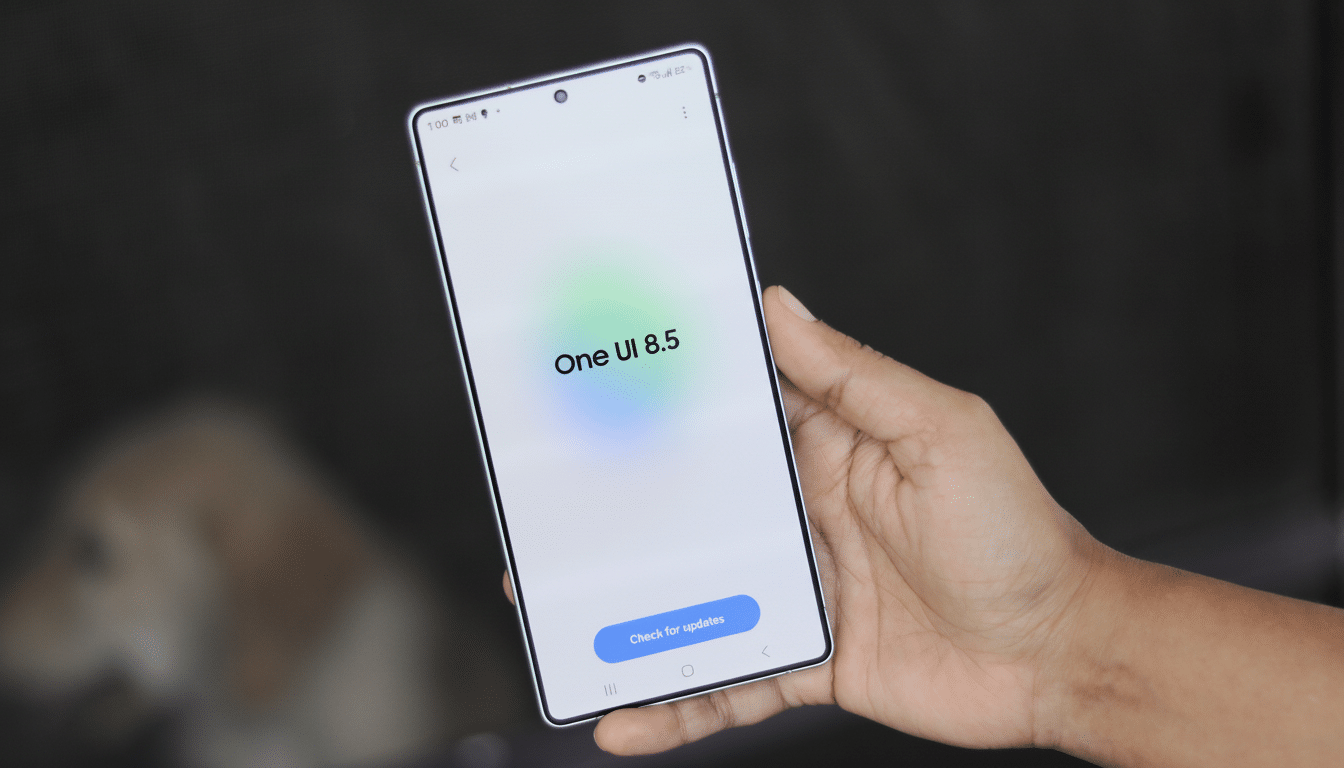Samsung’s upcoming interface overhaul looks likely to be more than a fresh coat of paint. On the back of credible leaks, developer teardowns and early build screenshots shared by long-time tipsters and specialist outlets, One UI 8.5 should deliver some real quality‑of‑life improvements for Galaxy owners. Here are the four features that make a difference — and why they matter in daily use.
Enhanced Appearance and Icon Changes Across Apps
Pre‑release images being leaked by the likes of Max Jambor and SamMobile paint a cleaner, glossier picture that also applies to its core apps and the launcher. App icons gain a hint of depth and softer highlights, while utilities such as the Gallery and Digital Wellbeing sport tidier layouts and more consistent typography. (It’s not a ground‑up redesign but it still succeeds in making the interface feel new and more cohesive, with better legibility on those super high‑brightness OLEDs!)

From a usability standpoint, the shifts matter. The clearer icon silhouettes help here; it’s easier to tell them apart at a glance from each other, and more consistent spacing inside system apps means less risk of tapping the wrong one in error — helpful on larger foldables where your thumb travels further because of the bigger screen. These visual refinements should dovetail with Samsung’s theming engine, so that your icon and accent colors follow what’s in the wallpaper, rather than blurring contrast.
Family Sharing Hub With Better Parental Controls
Various reports from Samsung‑centric portals like SammyGuru suggest One UI 8.5 will also bring a unified Family page that’s linked to your Samsung account. Think of it as a home base for shared services: group payment methods, group calendars and reminders, location check‑ins, and, if you’d like, the exchange of optional health data through Samsung Health — control it all from one screen.
One genuinely useful feature is a queue of requests. Kids (or other members of the group) can ask to buy apps or make in‑app purchases, and the family organizer can allow that transaction with a single tap. This isn’t groundbreaking, of course — we’ve seen similar features in Apple’s Family Sharing and Google Family Link comes to mind — but Samsung’s offering does seem more comprehensive with device control and wellness settings folded into the mix too. For Galaxy households that have several phones, tablets and watches, this could untangle the convoluted patchwork of per‑device controls into a single clean dashboard.
Contextual Screen Privacy for Sensitive Apps
Shoulder‑surfing is a genuine issue on public transit, in elevators or simply when you’re packed alongside strangers. Screenshots published by the leaker Ach and reported on by 9to5Google show a new privacy option that further hides its contents whenever you open sensitive apps — bank details, passwords, health data or messages — or when it detects you’re in a crowded setting. And while Samsung has not shared the exact science behind it, the intent is clear: it’s aiming to show onlookers as little as possible without actually forcing you to go completely into lock mode.
Once in use, expect choices such as dimming sensitive notifications, blurring the content of apps within multitasking views, or limiting the effective viewing angle with a privacy overlay.

Security pros have long advised pragmatic defenses against casual snooping; making it part of the OS means it’s easier to access and lifts the floor on privacy for everyone, not just power users.
Seamless Wi‑Fi to Cellular Switching on Galaxy Phones
Another quality‑of‑life gain, as SammyGuru noted after digging in system strings, is smarter network handoff. One UI 8.5 can determine if your Wi‑Fi network is really faster or more reliable than cellular, then switch to the latter in the background if it isn’t. That can be especially helpful when you’re downloading big videos, backing up photos or moving files around with Quick Share and aren’t aware that you’re stuck on a slow café network.
Its reasoning follows current trends in connectivity. Independent testing companies such as Opensignal and RootMetrics have found that mid‑band 5G can be faster than crowded public Wi‑Fi in many cities, while home Wi‑Fi will still be best for sustained uploads. The automated selection eliminates fumbling, reduces iffy transfers and can help maintain a video call’s quality as you walk from the street into a building — and then back out again.
What Galaxy Owners Can Expect and When Updates Arrive
Timing and which devices get the update will largely depend on Samsung’s wider upgrade schedule, though its most recent flagships and foldables will be a clear priority as they’re covered by the company’s four years of security updates for premium models. These sorts of features, historically, begin life on the latest Galaxy S series and are then back‑ported to prior‑year devices following a quick beta cycle led by Samsung Members.
Also look out for: references to camera code that the developers have found deep inside newer apps, and mentions of 3D, VR, and spatial media. Even if those don’t make it into the first release, those four upgrades alone meet some real annoyances: visual clarity, family coordination, shoulder‑surfing and flaky connectivity. They’re not fancy demos; they are fixes you feel day one.

